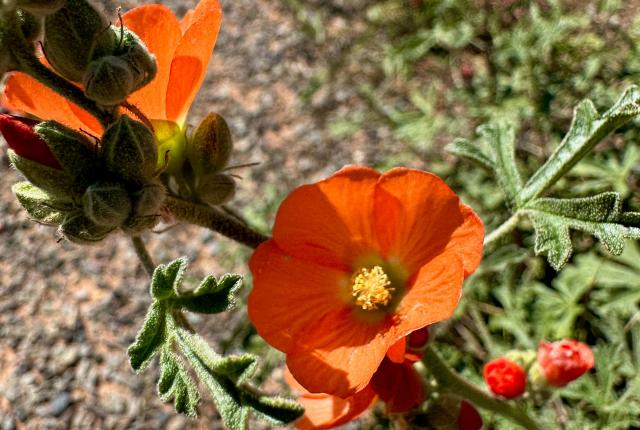THE GILA NATIONAL FOREST lists 51 plant species and 16 insect species as being of “management concern,” meaning they rely on National Forest habitats for their survival or are potentially affected by Forest Service management activities. Silver City residents Don and Wendy Graves, who serve as co-presidents of the Native Plant Society of New Mexico, highlight some common plants that are critical to the ecosystem.
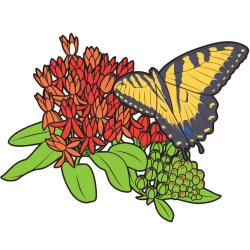 The 12 species of milkweed in the Gila Region all look very different. “Sometimes they’re beefy plants, sometimes they’re spindly plants,” says Wendy, noting they have similar flowers and are critical larval host plants. “A monarch butterfly will not lay its egg anywhere, only on a specific group of plants,” Don adds. “If you lose the milkweeds, the monarchs are toast.”
The 12 species of milkweed in the Gila Region all look very different. “Sometimes they’re beefy plants, sometimes they’re spindly plants,” says Wendy, noting they have similar flowers and are critical larval host plants. “A monarch butterfly will not lay its egg anywhere, only on a specific group of plants,” Don adds. “If you lose the milkweeds, the monarchs are toast.”
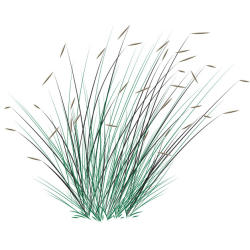 Don’t overlook—or underestimate—native grasses. “Grasses are flowering plants,” says Don. He points to the blue grama as the larval host for skippers, a group of small butterflies that are numerous in the Gila. “Blue grama is also important as refuge through the winter for not just butterfly larvae, but the pupa,” he adds.
Don’t overlook—or underestimate—native grasses. “Grasses are flowering plants,” says Don. He points to the blue grama as the larval host for skippers, a group of small butterflies that are numerous in the Gila. “Blue grama is also important as refuge through the winter for not just butterfly larvae, but the pupa,” he adds.
 The Gila’s half-dozen species of globemallow prove important to New Mexico’s 1,000 species of native bees. Female Diadasia bees only take pollen and nectar from globe mallow when building nests and laying their eggs. “They evolved with that particular plant,” Don says.
The Gila’s half-dozen species of globemallow prove important to New Mexico’s 1,000 species of native bees. Female Diadasia bees only take pollen and nectar from globe mallow when building nests and laying their eggs. “They evolved with that particular plant,” Don says.
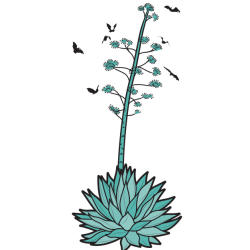 Two species of agave rely on the lesser long-nosed bat for pollination. “If you’ve been around the Southwest long enough, you know the agave puts up a flower stalk 15 to 20 feet tall,” says Don. “[The bats are] going in and feeding on that high-energy nectar. In the process, they’re getting their whole nose and face full of yellow pollen, then going to the next flower and mixing it up.”
Two species of agave rely on the lesser long-nosed bat for pollination. “If you’ve been around the Southwest long enough, you know the agave puts up a flower stalk 15 to 20 feet tall,” says Don. “[The bats are] going in and feeding on that high-energy nectar. In the process, they’re getting their whole nose and face full of yellow pollen, then going to the next flower and mixing it up.”
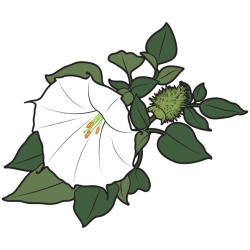 While the sacred datura serves as a larval host plant for the sphinx moth and tobacco hornworm, the poisonous perennial also plays an important spiritual and medicinal role in some Indigenous cultures. “You don’t see a lot of flowers on Mimbres pottery,” Don says. “But one that you do, at least before it opens, has this beautiful pattern.”
While the sacred datura serves as a larval host plant for the sphinx moth and tobacco hornworm, the poisonous perennial also plays an important spiritual and medicinal role in some Indigenous cultures. “You don’t see a lot of flowers on Mimbres pottery,” Don says. “But one that you do, at least before it opens, has this beautiful pattern.”


